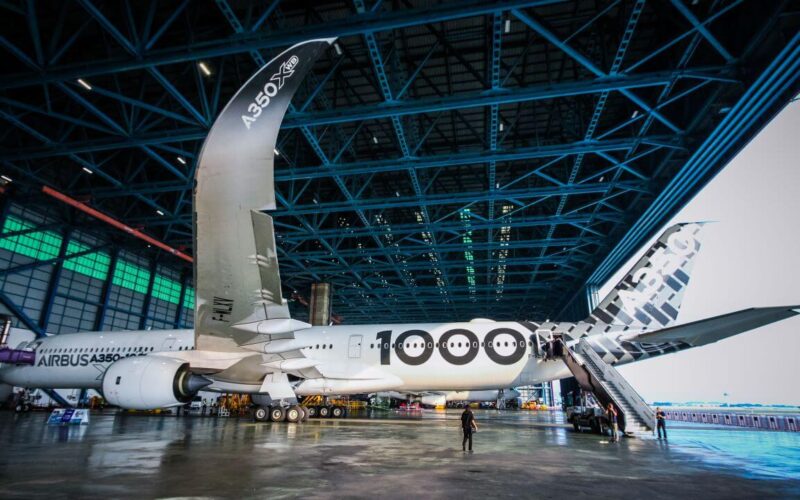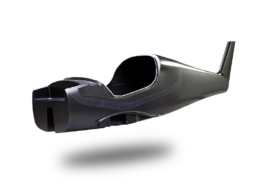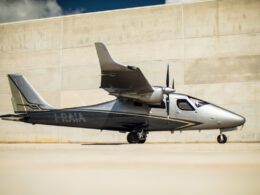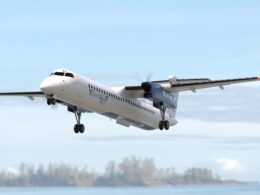The largest member of the Airbus A350XWB Family – the A350-1000 – has been given the green light from the European Union Aviation Safety Agency (EASA) for an increase in its maximum seating capacity by 40 additional seats. The higher seat count, enabled through the installation of modified emergency exits, would potentially boost the competitiveness of the A350-1000 against the Boeing 777X.
The A350-1000 has previously been approved to seat up to 440 passengers. Configured in a typical three-class layout, the jet accommodates 350-410 seats, according to the manufacturer. British Airways’ A350-1000s, for instance, which is the latest to receive the model in June 2019, are configured in a 331-seat layout. Cathay Pacific, one of the biggest buyers of the A350-1000, has its jets configured with 334 seats.
For comparison, the A350-1000’s smaller brother – the A350-900 – has also been approved to a maximum seating of 440, but typically accommodates up to 350 passengers. The latest to receive that variant, with a total of eight on firm order from the plane maker, is Scandinavian airline SAS, which took delivery of its first A350-900 on November 28, 2019. The carrier’s A350-900s have a three-class cabin layout with 300 seats.
Now, with the EASA’s go-ahead, the new maximum seating for the larger A350-1000 variant would increase by 40 additional seats to 480 passengers, raising the question for what purpose (and by what operators) would such high-density aircraft be utilized.
Airbus’s pursuit of increased capacity
According to official documents, back in June 2019, the EASA introduced an Equivalent Safety Finding to review Airbus’ request for an increase in maximum seating capacity on the A350-1000. However, the additional seating required the development of new safety regulations. The EASA had found that the “Type A” emergency exits were not sufficient to seat more passengers on board the aircraft than the approved 440 maximum count.
“Notwithstanding the improvements introduced in the meantime in the “state of the art” Type A emergency exit design (e.g. escape slides performance, door opening time, etc.), EASA does still consider the maximum number of passenger seats (i.e. 110) allowed by CS 25.807(g) per pair of Type A emergency exits as appropriate,” is written in the Equivalent Safety Finding (ESF).
Airbus’ request for an increase in seating capacity on the A350-1000 has been granted by the EASA with development of a new term and subsequent modified design – the “Type A+” emergency exit, featuring additional safety measures.
According to Airbus’s proposal, outlined in the ESF and reviewed by the regulator, these modified emergency exits will feature two parallel evacuation slides, with extra, enhanced lighting and a dedicated exit sign. The new doors will also require additional cabin crew – three, instead of two that is standard for Type A exit pair, – to be stationed at each installed pair of Type A+ emergency exits.
“The design features included in the proposed Type A+ emergency exit definition provide for an increased evacuation performance compared to a design meeting the requirements for a Type A emergency exit,” the regulator explains in the ESF.
Airbus was tasked with undertaking rigorous testing campaign to ensure the increased performance of the Type A+ emergency exits, which it completed successfully. According to EASA’s Type Certificate outline, dated November 27, 2019, Airbus’s request for additional seating has been granted.
According to cabin specifications, as stated in the document, the new Type A+ exits will allow to sit 120 passengers per emergency exit – an increase of 10 passengers compared to the allowance with Type A emergency exit. However, the high-density will also mean a less spacious cabin, as the new version will require the seating to be 10-abreast (instead of current 9-abreast).
The EASA also lists various zonal capacities for the new version, with up to 124 seats in the front cabin, a maximum of 180 in the central cabin, and a maximum of 190 seats in the aft cabin. If fewer Type A+ exits are installed, the regulator also allows options for a maximum of 470 seats and below. The minimum number of required cabin crew would rise to nine if the maximum seating exceeds 400.
The new contender
The A350-1000 is already a rival to the Boeing 787-10 Dreamliner and the 777-300ER. With the development of a higher capacity variant, it will now put the jet in direct competition with Boeing’s brand-new and highly anticipated 777X model.
According to the manufacturer’s current technical specifications, the larger 777-9 variant will be able to seat up to 426 passengers in a two-class layout, while the 777-8 will accommodate a maximum of 384 passengers. Although not reaching the seat count of the A350-1000, the smaller 777-8 will be in close race with the Airbus wide-body in terms of range: the A350-1000 can fly up to 8,700 nm (16,100 km), while the maximum range of the 777-8 is 8,730 nm (16,170 km).
And here is where the competition comes in: Australian flag carrier Qantas has challenged Boeing and Airbus to present their “best offer” for a more capable long-haul jetliner with greater payload capacity to pursue its Project Sunrise mission. The airline aims to launch ultra-long-haul routes from the east coast of Australia to London and New York and is currently using the Boeing 787-9 to conduct three research flights from London to Perth. Boeing has pitched the 777-8 for the project, but delays in the 777X program have already worsened the odds for the U.S. plane maker, which is reportedly now offering the 777-9 for the project.
The best-seller
While the Airbus-Boeing rivalry is not deemed to end anytime soon, it can be said that the A350s are doing well on their own. At the end of October 2019, the A350 XWB Family had received 913 firm orders from 50 customers worldwide, making it one of the most successful wide-body aircraft ever, as the manufacturer says itself. The biggest cash cow for Airbus, however, has been the smaller A350-900 variant: the absolute majority of orders have been placed for the latter jet, totaling 737; the remaining 176 firm orders stand for the A350-1000.
By far the largest customer of the A350-1000 is Qatar Airways, the launch operator of the type (the jet entered service with the airline in February 2018). The Gulf carrier has placed 42 orders for the A350-1000. Other big buyers include Etihad and Cathay Pacific with 20 firm orders each and British Airways with 18.











